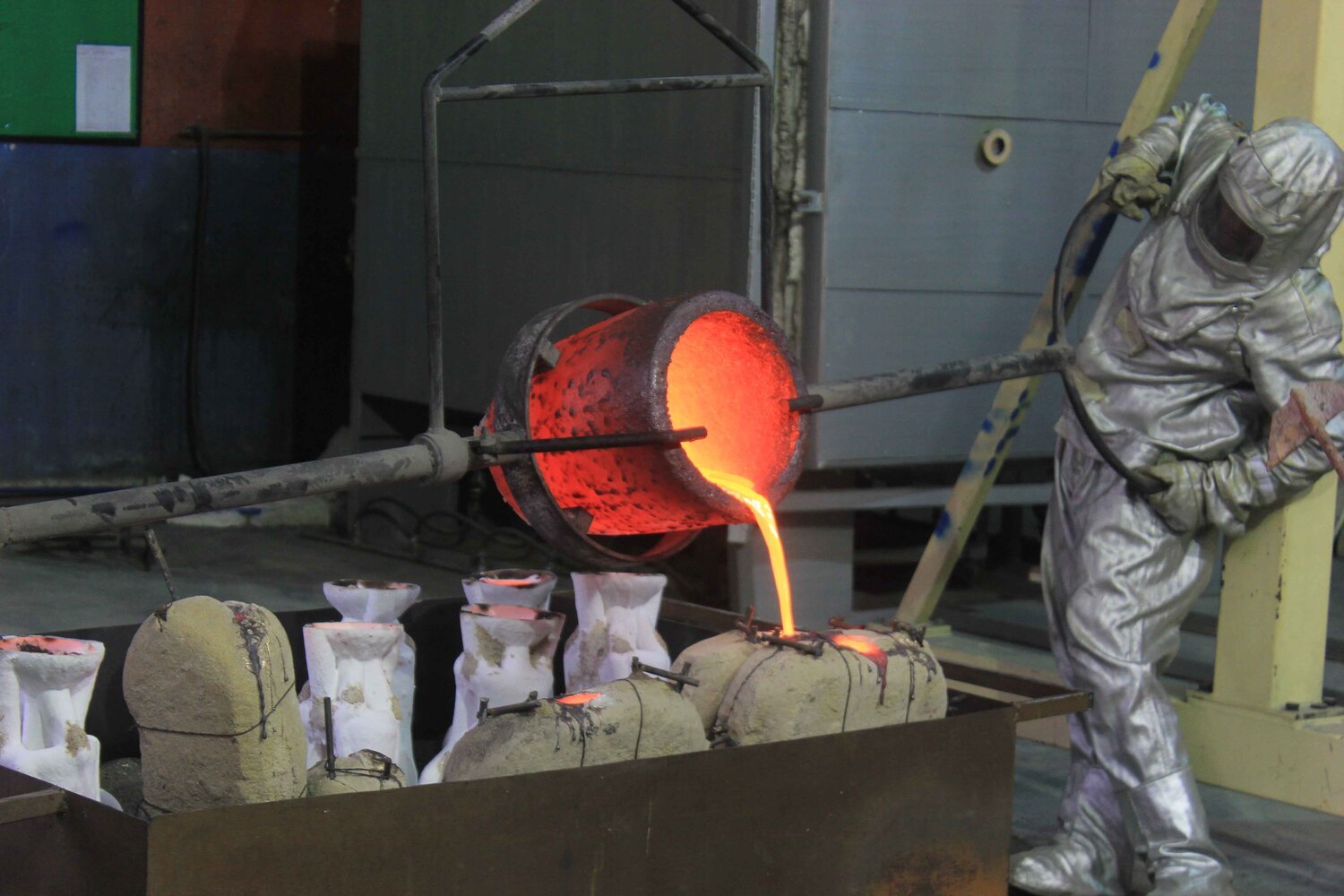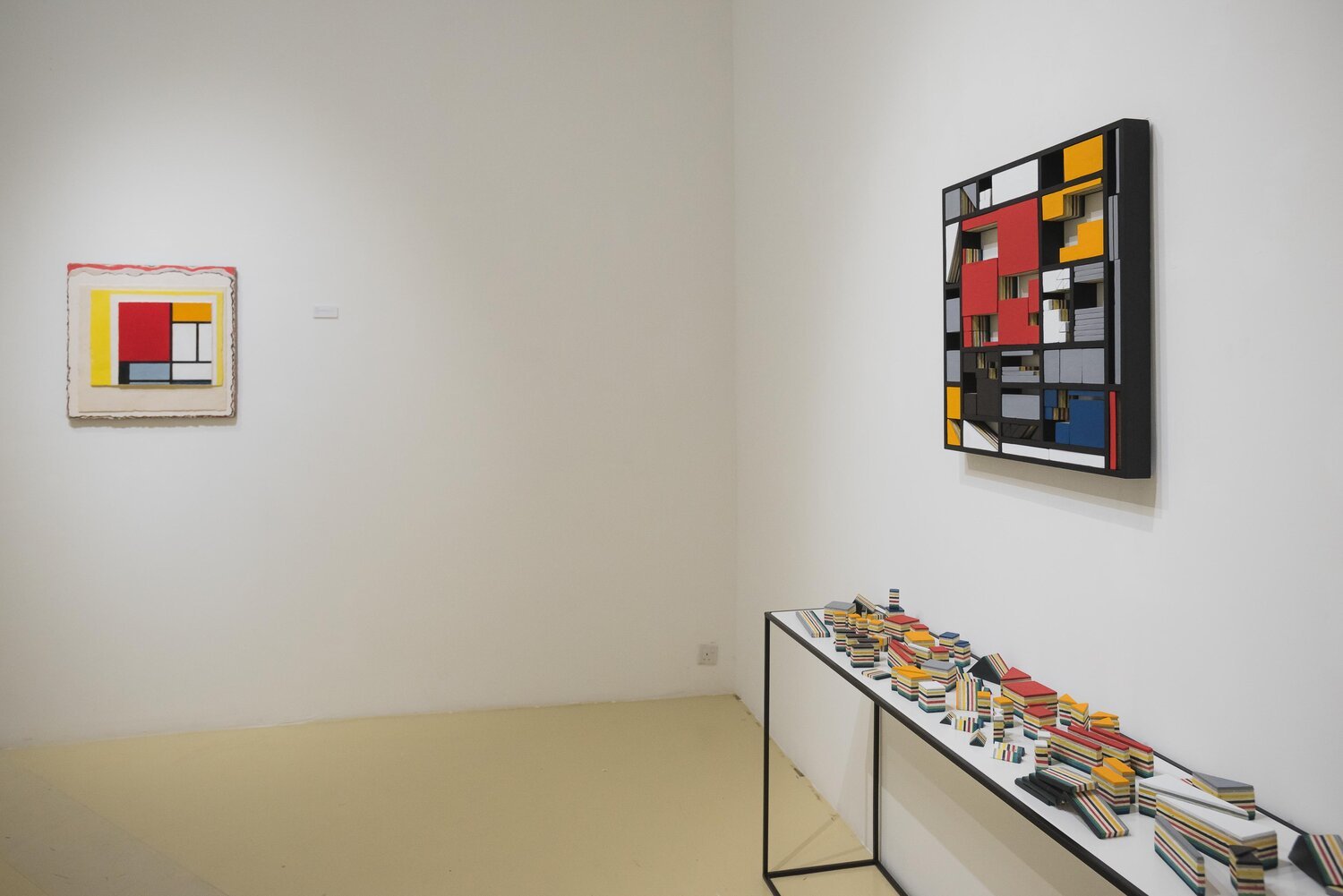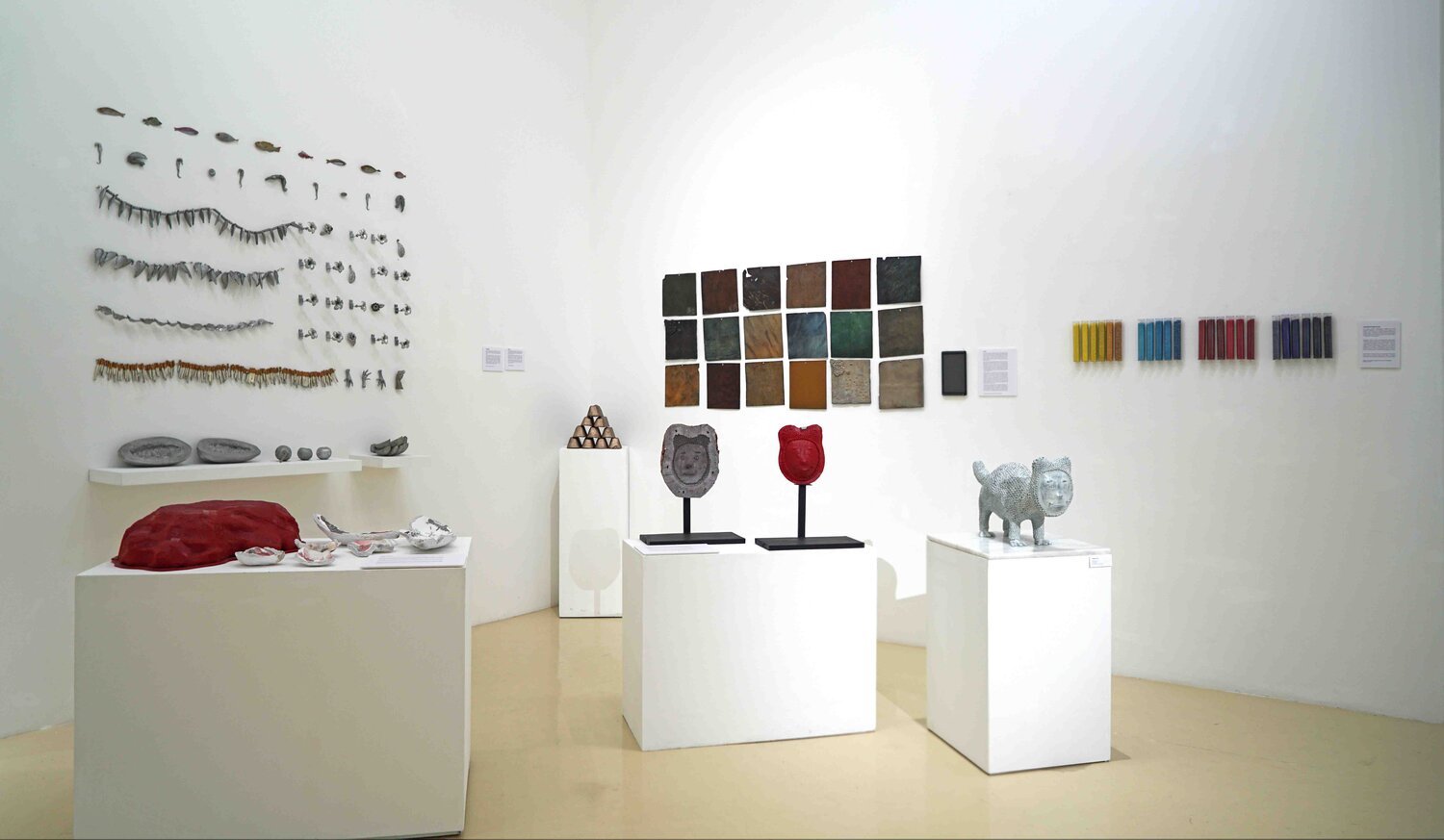'Navigating Entropy' at Gajah Gallery
Celebrating collaborations with Yogyakarta Art Lab
By Ian Tee
'Navigating Entropy', 2020, exhibition installation view of works by Yunizar. Image courtesy of Arron Teo.
Gajah Gallery's latest exhibition 'Navigating Entropy' is a celebration of artistic collaborations at Yogyakarta Art Lab (YAL). Gathering works by 11 YAL artists-in-residence, the show features sculptural works made in a broad range of materials from concrete to bronze, clay to crushed glass. The presentation reflects the spirit of experimentation fostered at YAL, and shines the spotlight on dynamic processes behind a resolved work of art, turning a journey filled with uncertainty and chaos into an opportunity for surprises and artistic growth.
Yogya Art Lab Team. Image courtesy of Rendy Eriand.
Yunizar, 'Bunga Kuning', 2012, mixed media on paper, 196 x 218 x 11cm. Image courtesy of Gajah Gallery.
Established in 2012 by Gajah Gallery founder Jasdeep Sandhu and Yogyakarta artist Yunizar, YAL initially focused on papermaking but has since gained recognition as a world-class foundry specialising in bronze. A selection of works at the end of the gallery captures this parallel development in Yunizar's practice from the flat picture plane into sculpture. This expansion into metal seems to be foreshadowed in 'Bunga Kuning' (2012), a large-scale drawing with Yunizar's carefree lines executed using poured lead and pigment stains that recall rusty surfaces.
Today, Yunizar is less involved in the daily operations of YAL and the space is run by a team of 12 under the leadership of Foundry Director James Page, who took up the position in 2014. Speaking about YAL's residency programme, he notes that the choice of artist is not based on their past experience in sculpture but rather their potential to explore new approaches. "What we strive to offer is a team of highly skilled technicians, used to experimentation with new materials as well as working with tried-and-tested methods," says Page. The goal is to enable artists to push their practices forward in materials and directions they would not ordinarily have access to. Key examples include lost wax ceramic shell casting and consistent patina finishing. The former yields castings that capture fine details such as the artist's finger prints, while the latter is necessary for bronze editions.
“The goal is to enable artists to push their practices forward in materials and directions they would not ordinarily have access to.”
Liquid bronze is poured into sandcast and ceramic shells by craftsmen at Yogya Art Lab. Image courtesy of Rendy Erianda.
Kumari Nahappan, 'Movement 1', 2016, cast bronze, 59.5 x 39 x 100cm, unique edition. Image courtesy of Gajah Gallery.
Page also facilitates the collaboration process by acting as an intermediary between artists and YAL technicians. Given the informal nature of YAL residencies, visiting artists could be in Yogyakarta for extended periods or just a few days, either taking a hands-on approach or checking in on the outcome. Thus, keeping communication streamlined is vital for resident artists to oversee aspects of production remotely from their home countries.
This ongoing relationship is played out in the creation of Jane Lee's latest works, which travelled back and forth between Yogyakarta and the artist's studio in Singapore before its completion for the exhibition. Meticulously constructed layer by layer, her 'Mondrian Series' are made with pigmented concrete instead of paint. As implied by its title, the work appropriates Mondrian's iconic compositions and recreates them as sculptural pieces. In a playful gesture of demystification, Lee strips away the aura associated with the "masterpiece" by chipping away at its edges or breaking the composition down into inviting, bite-sized parts. By exposing the making process, Lee reorients the viewer's attention to the human hands involved in creating a work of art.
'Navigating Entropy', 2020, exhibition installation view of 'Mondian Series' by Jane Lee. Image courtesy of Arron Teo.
Jason Lim and a craftsman prepare the kiln for sawdust firing. Image courtesy of Yogya Art Lab.
Jason Lim, 'Hair In The Wind', 2019, earthenware, 69 x 94 x 55cm. Image courtesy of Gajah Gallery.
Importantly, there is mutual learning and transfer of skills in the collaboration process. During his residency at YAL, veteran performance artist and ceramist Jason Lim passed on his knowledge of building brick kilns for a sawdust firing technique. His pieces speak most profoundly to the exhibition title 'Navigating Entropy' in its embrace of the unpredictable firing process and the fragile beauty of earthenware.
This theme of strength and fragility is carried through in Suzann Victor's crushed stained glass sculptures which take the form of wings, hearts and religious icons. For Victor, the collaboration was an opportunity to revisit a seminal work presented in the 2nd Asia Pacific Triennial of Contemporary Art in Brisbane in 1996. Titled ‘Tintoretto’s Risen Christ Arresting Lazy Susan’, the installation features parts of the female anatomy encrusted in crushed glass which has become a signature material.
“YAL’s commitment to realising the artist’s vision is matched by their caliber and skillsets, and this sets the benchmark for artistic collaboration in the region.”
Victor is no stranger to the remote collaborations, having worked with curators, designers and engineers to realise installation pieces and public artworks. Yet, she remains excited by the innovation in new materials and technical solutions rising out of this long-term partnership. "The team's knowledge, sensitivity, work ethnic and attention to deal is unsurpassed," she says. "Their commitment to realising the artist's vision is matched by their caliber and skillsets, and this sets the benchmark for artistic collaboration in the region."
Within the gallery, the team has dedicated a display to material studies and experimental pieces, showing tools, patina plates and crushed stain glass samples. It perfectly evinces the rigorous research and intensive labour behind YAL’s consistent pursuit of excellence, as represented by the collaborative works in the exhibition.
Suzann Victor, 'Double Happy', 2018, crushed stained glass, 43 x 34 x 34cm. Image courtesy of Gajah Gallery.
'Navigating Entropy', 2020, exhibition installation view of process display. Image courtesy of Gajah Gallery.
Creative ventures such as YAL explore a fine balance between the risks involved in uninhibited experimentation and the demands of a commercially viable gallery. While Page observes a rising interest in sculptural works, he stresses how improvements in the quality of castings and knowledge in bronze conservation have given Southeast Asian collectors more confidence in the longevity of their acquisitions. Looking ahead to the future, YAL aims to expand further into working with stainless steel as well as 3D-printing aided design. 'Navigating Entropy' is a testament to the creative potential enabled by freedom from the fear of failure and a long-term commitment to nurturing technical expertise.
'Navigating Entropy' is on view from 5 to 29 November 2020, at Gajah Gallery.























